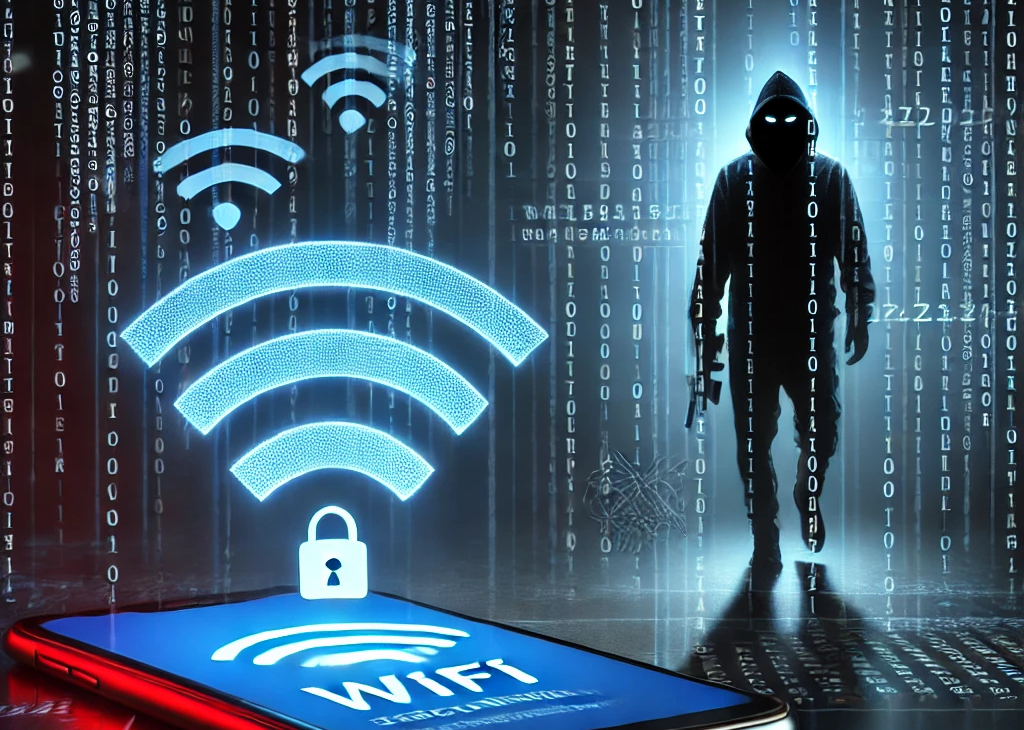The Dark Side of WiFi

Your phone could be revealing your home WiFi information—and your location—to hackers without you even realizing it!
In the digital age, convenience often comes at the cost of security and privacy. One overlooked yet serious risk is leaving WiFi enabled on personal devices when they are not in use. While having WiFi turned on might seem harmless, it can expose you to numerous cyber threats and privacy invasions. Below, we delve into the dangers of keeping WiFi enabled on your smartphone, laptop, or tablet and why it’s a habit you should reconsider.
Your Device Constantly Beacons for Saved Networks
One of the most significant privacy risks comes from the way personal devices search for known WiFi networks. When your device has WiFi enabled, it constantly broadcasts a list of previously connected networks, seeking a connection. This information can be exploited by malicious actors in several ways:
- Geolocation Tracking: Attackers can capture these beacon requests and use them to determine where you’ve been. Websites like Wigle.net allow users to search for WiFi SSID locations, meaning an attacker who intercepts your device’s beacons can potentially correlate them with known locations, such as your home, workplace, or frequently visited places.
- Pattern-of-Life Analysis: By collecting data on where and when your device searches for networks, an attacker can build a detailed picture of your daily routines, travel habits, and behaviors.
- Evil Twin Attacks: Cybercriminals can set up rogue networks that mimic your saved SSIDs. If your device automatically connects, it can be subjected to man-in-the-middle attacks, allowing hackers to intercept your sensitive data.
Mitigation
- Disable WiFi when you’re not actively using it, especially in public places.
- Regularly clear your list of saved networks to limit beacon broadcasts.
- Use a trusted VPN to encrypt your network traffic and obscure your online presence.
Increased Attack Surface for Cybercriminals
Leaving WiFi enabled increases your exposure to cyber threats. Public and unsecured WiFi networks are rife with risks, and an always-on WiFi setting makes it easier for attackers to compromise your device. Some of these threats include:
- Man-in-the-Middle (MITM) Attacks: Hackers can intercept data transmitted between your device and the network, stealing login credentials, banking details, and other sensitive information.
- Session Hijacking: Attackers can exploit weaknesses in network encryption to take control of active sessions, potentially gaining unauthorized access to accounts.
- Malware Injection: Some compromised networks push malicious software onto connected devices, infecting them with spyware, ransomware, or keyloggers.
Mitigation
- Avoid connecting to public WiFi networks without using a VPN.
- Disable automatic connection to open networks.
- Keep your device’s software and security patches up to date.
Battery Drain and Performance Issues
Keeping WiFi enabled when not in use consumes a significant amount of battery power. Your device continuously searches for available networks and attempts to connect to known ones, draining battery life unnecessarily. In addition, background applications and system processes may use WiFi to sync data, further reducing efficiency.
Mitigation
- Turn off WiFi when you don’t need it to conserve battery life.
- Use power-saving modes that restrict background network activity.
- Monitor and manage apps that consume excessive power while on WiFi.
Exposure to Rogue Access Points and Fake Networks
Cybercriminals set up rogue access points (APs) to lure unsuspecting users into connecting. These fake networks often have names similar to legitimate hotspots (e.g., “Starbucks WiFi” or “Airport Free WiFi”). Once connected, attackers can:
- Intercept unencrypted data transmissions.
- Inject malicious content into websites you visit.
- Steal login credentials via phishing attacks.
Mitigation
- Always verify the authenticity of the WiFi network before connecting.
- Use mobile data or a trusted personal hotspot instead of public WiFi.
- Ensure websites you visit use HTTPS to encrypt your data.
Data Harvesting and Behavioral Profiling
Many public WiFi networks, even legitimate ones, engage in data collection. Businesses and advertisers track user connections to analyze behaviors, target ads, and sell data to third parties. Even if you don’t actively connect, some networks collect information from probing devices, such as unique MAC addresses and device identifiers.
Mitigation
- Enable MAC address randomization in your device settings.
- Avoid using public WiFi when accessing sensitive accounts.
- Use privacy-focused tools such as browser extensions that block trackers.
Bluetooth and NFC Exploits via Open WiFi Connections
Leaving WiFi enabled increases the likelihood of related wireless technologies being exploited. Some sophisticated attacks use open WiFi connections to target vulnerabilities in Bluetooth and NFC (Near Field Communication), allowing attackers to gain unauthorized access to your device.
Mitigation
- Disable Bluetooth and NFC when not in use.
- Use strong authentication methods such as fingerprint or PIN protection.
- Be cautious of unsolicited pairing requests from unknown devices.
Conclusion
The convenience of leaving WiFi enabled comes with significant risks, ranging from privacy invasions to cyberattacks. By adopting better security practices and being mindful of your device’s network activity, you can minimize exposure to potential threats. Taking a few extra seconds to disable WiFi when not needed can go a long way in protecting your personal data and digital footprint.
By implementing the recommended mitigations outlined in this article, you can greatly enhance your digital security and ensure that your personal devices remain safeguarded against modern cyber threats.